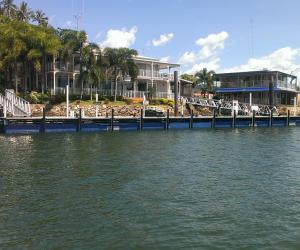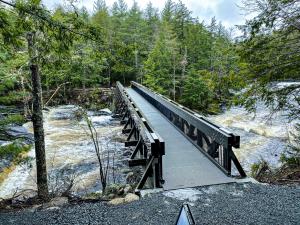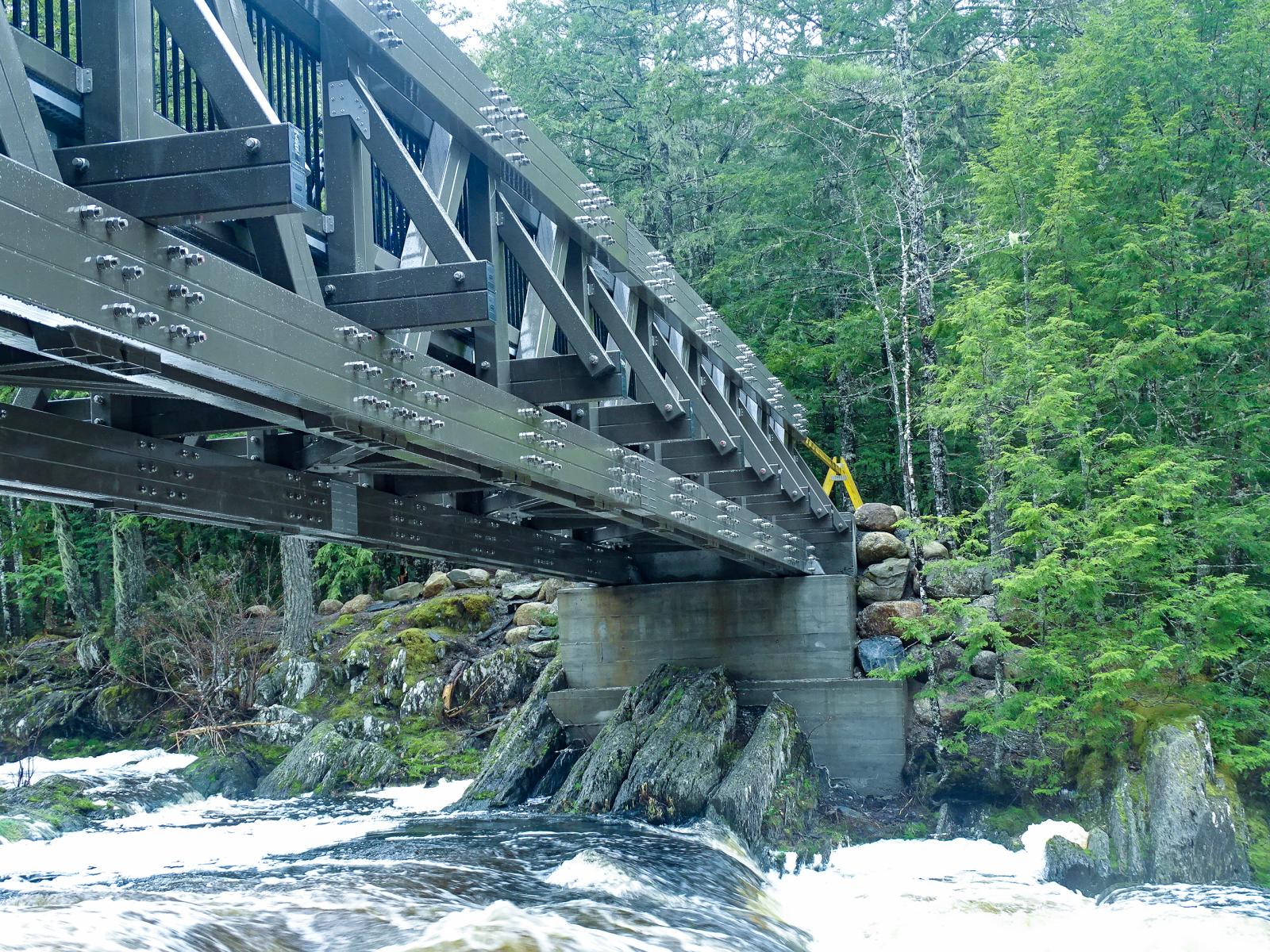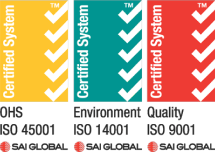Industries are increasingly exploring alternatives to traditional building materials. Research has shown some construction materials, once thought of as the go-to material, might not always be the best choice in certain environmental conditions or specified applications.
Among the most notable new alternatives to traditional materials for construction projects is fiber-reinforced polymer (FRP). Sometimes known as fibre reinforced plastic or fiberglass reinforced plastic, FRP composite materials have emerged as a strong competitor to steel, and other materials, in various applications.
Wagners Composite Fibre Technologies (CFT) have explored the differences, key benefits, and ideal use cases for both FRP and steel — empowering engineers, builders and specifiers with the knowledge to make informed decisions.
FRP VS STEEL: PROPERTIES AND PERFORMANCE
Understanding the core differences between FRP and steel starts with their composition and physical properties.
- Weight: FRP is significantly lighter than steel (up to 75% lighter) making it easier to handle, transport and install.
- Corrosion Resistant: FRP’s corrosion resistance makes it ideal for harsh environments, unlike steel which is vulnerable to rust, especially in coastal or chemical-exposed areas.
- Thermal Conductivity: FRP has low thermal conductivity, helping maintain stable temperatures and reducing condensation risks. Steel, on the other hand, conducts heat readily, which can be a drawback in temperature-sensitive environments.
- Design Flexibility: FRP can be manufactured into complex shapes due to its layered fiberglass and resin matrix. This flexibility allows for tailored solutions. Steel fabrication is more rigid and labor-intensive.
- Strength and Durability: Steel is well-known for its strength and proven performance across centuries of use. FRP, however, offers a high strength-to-weight ratio, achieving structural integrity without the bulk.
- Maintenance Needs: Steel structures often require ongoing maintenance to combat corrosion, adding to long-term costs. FRP requires minimal to low maintenance.
- Material Composition: Steel is an iron alloy strengthened with carbon. FRP made at Wagners is composed of glass fibers embedded within a vinyl ester resin matrix, manufactured using their proprietary pull-winding process. This is a variation of pultrusion that produces continuous, high–strength composite profiles.
- Impact Resistance: FRP exhibits superior impact resistance compared to steel. Unlike steel, which may permanently deform or dent upon impact, FRP’s composite structure allows it to absorb and distribute impact energy effectively, minimising the risk of permanent deformation.
ADVANTAGES OF FRP: WHY MORE PROJECTS ARE SWITCHING
FRP is not just a substitute for steel — it’s a solution in its own right, offering multiple performance advantages:
- Lightweight Efficiency: Being 70–80% lighter than steel, FRP simplifies logistics and speeds up installation timelines.
- Corrosion-Free Performance: FRP structures stand up against the harshest environments without rust or degradation, reducing lifetime maintenance costs.
- Fire-Resistant Options: Many FRP products include fire-retardant additives, and electrical insulation capabilities, increasing safety in high-risk zones such as tunnels, chemical processing facilities or utility poles.
- Strength Without Weight: FRP’s impressive strength-to-weight ratio supports demanding applications without excessive structural load.
APPLICATIONS: WHERE FRP AND STEEL EXCEL
Both materials have their place in the construction industry and the engineering world. Here’s how their applications compare:
STEEL APPLICATIONS:
- Trusted for major infrastructure like bridges, skyscrapers, vehicles and heavy machinery.
- Chosen for load-bearing and high-impact environments where traditional strength is essential.
FRP APPLICATIONS:
- Coastal, chemical, and marine environments, where being highly resistant to corrosion is critical.
- Offshore platforms, where FRP structures avoid the frequent re-coating needed with steel.
- Safety infrastructure such as handrails, stair treads, ladders, FRP grating and anti-slip walkways.
- Chemical plants and water treatment facilities, where FRP resists acids, alkalis and water damage.
- Pipelines and tanks, where durability and leak resistance are essential.
- Lightweight structures that benefit from reduced transportation and installation costs.
- Hybrid solutions where FRP and steel are used together to combine their strengths.
COST ANALYSIS: FRP VS STEEL OVER THE LONG TERM
While FRP may carry a higher initial material cost, the total cost of ownership is often significantly lower. Reduced labour, transport and maintenance needs quickly offset the upfront investment, especially in remote areas, corrosive environments or those exposed to harsh environmental conditions. For many projects, FRP delivers greater value over time.
MATERIAL SELECTION IN CONSTRUCTION: MAKING THE RIGHT CHOICE
Choosing between FRP and steel depends on your project’s specific needs. Here are some guiding factors:
- Environmental Exposure: In corrosive or damp environments, FRP clearly outperforms steel in durability and maintenance.
- Design Requirements: Need a custom, lightweight or non-conductive structure? FRP offers unmatched design freedom.
- Lifespan and Maintenance: FRP structures reduce maintenance costs and extend service life.
- Load-Bearing Needs: For ultra-heavy loads or seismic zones, steel may still be the preferred choice.
- Budget Planning: Consider more than the price of the material itself, but installation speed, long-term upkeep and labor savings.
- Lower Carbon Footprint: Quantify the reduction of embodied carbon in FRP structures with our Environmental Product Declaration (EPD).
WAGNERS CFT: REAL-WORLD FRP APPLICATIONS

COOKTOWN PONTOON
ENHANCING MARINE INFRASTRUCTURE WITH FRP
In the demanding marine environments of Far North Queensland, the Port of Airlie Pontoon stands as a testament to innovation and resilience. As Australia’s first fully composite pontoon, this project showcases the practical application of FRP in addressing the challenges of harsh marine environments.
Commissioned by Fantasea Cruises and now operated by Cruise Whitsundays, the Port of Airlie Pontoon was designed and constructed by Wagners CFT. The pontoon features a 22-meter-long FRP truss gangway that accommodates tidal movements, marking Wagners CFT’s first long-span truss structure.
ENGINEERING CHALLENGES
Environmental Exposure: Located in a coastal setting, the pontoon is subjected to saltwater, humidity, and varying weather conditions. Our solution utilised FRP materials, which are chemically inert and resistant to corrosion, ensuring the structure’s longevity without the need for frequent maintenance.
Tidal Variations: The site experiences significant tidal changes, necessitating a design that can adapt to fluctuating water levels. Our solution was to incorporate a 22-meter-long FRP truss gangway allowing for smooth vertical movement with the tides, maintaining accessibility and safety.
The implementation of FRP in the Port of Airlie Pontoon project addressed the immediate concerns of environmental challenges and provided a durable, low-maintenance solution. This project has set a precedent for future developments in similar settings.

MERSEY RIVER PEDESTRIAN BRIDGE
ENGINEERING CHALLENGES SOLVED WITH FRP
In the realm of modern infrastructure, the Mersey River Pedestrian Bridge in Kejimkujik National Park, Nova Scotia, Canada, stands as a testament to the practical application of Fibre Reinforced Polymer (FRP) in addressing complex environmental and logistical challenges.
Following the destruction of the previous bridge by Hurricane Dorian in 2019, there was a pressing need for a resilient, sustainable replacement that could withstand the park’s harsh climatic conditions. Wagners CFT was entrusted with this task, leading to the creation of a 30.5-meter single-span pedestrian bridge—the longest FRP bridge in North America at the time of construction.
Remote Location and Limited Access
Posing challenges in site access, the bridge is nestled within a sensitive ecosystem. Traditional construction methods risked environmental disruption. FRP’s lightweight nature facilitated the prefabrication of bridge components off-site, which were then transported and installed with minimal ecological impact.
Environmental Resilience
The park’s environment is characterised by frequent flooding, high winds, and temperature extremes. FRP’s inherent corrosion resistance and durability made it an ideal material choice, ensuring longevity and reducing maintenance needs.
Aesthetic Integration
With over 10,000 annual visitors, the bridge needed to harmonise with the park’s natural beauty and historical significance. FRP’s design versatility allowed for a structure that met both functional and aesthetic requirements, enhancing the visitor experience.
The successful completion of the Mersey River Pedestrian Bridge underscores FRP’s viability in constructing durable, sustainable infrastructure in environmentally sensitive areas. This project exemplifies how innovative materials can meet modern engineering demands while preserving natural ecosystems.
THE FRP VS STEEL DECISION
Both FRP and steel have important roles to play in modern construction. However, as industries seek smarter, safer and more sustainable materials, FRP is fast becoming the material of choice for environments where corrosion resistance, safety and lifecycle cost matter most. The significant advantages when you choose FRP can make all the difference to your project.
At Wagners CFT, we’re proud to lead the way in advanced composite solutions. If you’re planning a project and want to explore whether FRP is right for your specific scenarios or need to explore your options for future structures, our team is here to help.
Contact us today to discuss the right material for your next project.


